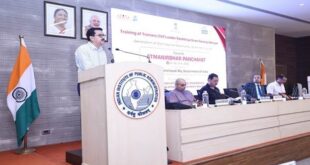- Recently, the latest data from the National Family Health Survey (NFHS 2019-21) has been released.
- The data shows a declining trend regarding Total Fertility Rate (TFR: the average number of children per woman).
Important points:
- Total fertility rate (TFR) in simple terms refers to the total number of children born or likely to be born to a woman in her lifetime if she were subject to the prevailing rate of age-specific fertility in the population.
- TFR of about 2.1 children per woman is called Replacement-level fertility. TFR lower than 2.1 children per woman — indicates that a generation is not producing enough children to replace itself, eventually leading to an outright reduction in population.
Reasons
- Women Empowerment: The latest data also show significant progress on several indicators related to fertility, family planning, age at marriage and women’s empowerment — all of which have contributed to the decrease in TFR.
- Also, there has been a significant increase in current use of any modern contraceptive method.
- Contraceptive Prevalence Rate has increased substantially from 54% to 67% at the all-India level.
- Reversible Spacing: Introduction of new reversible spacing (gaps between children) methods , wage compensation systems to undergo sterilisation, and the promotion of small family norms also worked well over the years.
- Government Efforts: India has for long been working on population control. In fact, India was the first country to launch a national-level family planning programme and the encouraging results that we see now are due to sustained, concerted efforts put together by the Centre, and the state governments
Significance
- TFR of 2 is a “definite indicator” of stability of population in the long term in the country. A TFR of 2.1 is something a country wants to achieve.
- A fall to 2 means India has achieved the goal of population stabilisation.
- It essentially means that India need not worry too much about a very large population being a challenge to our development.
- The younger population profile for the next 2-3 decades will provide an opportunity for accelerated economic growth.
- However, in order to leverage this great opportunity for accelerated development, India should invest in public health and education with skills.
- This also means we will possibly still become the most populous country in the world — it was expected somewhere between 2024-2028 — but it will now be delayed.
SOURCE: THE HINDU,THE ECONOMIC TIMES,MINT
 Chinmaya IAS Academy – Current Affairs Chinmaya IAS Academy – Current Affairs
Chinmaya IAS Academy – Current Affairs Chinmaya IAS Academy – Current Affairs



